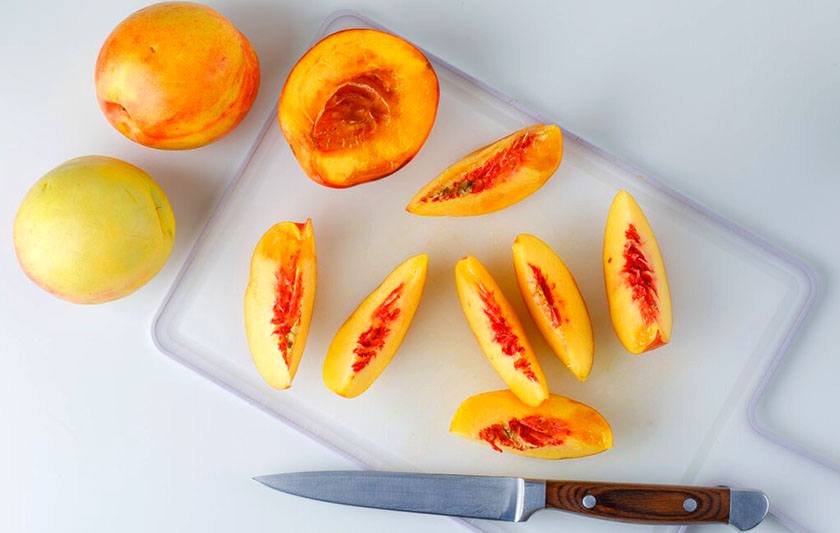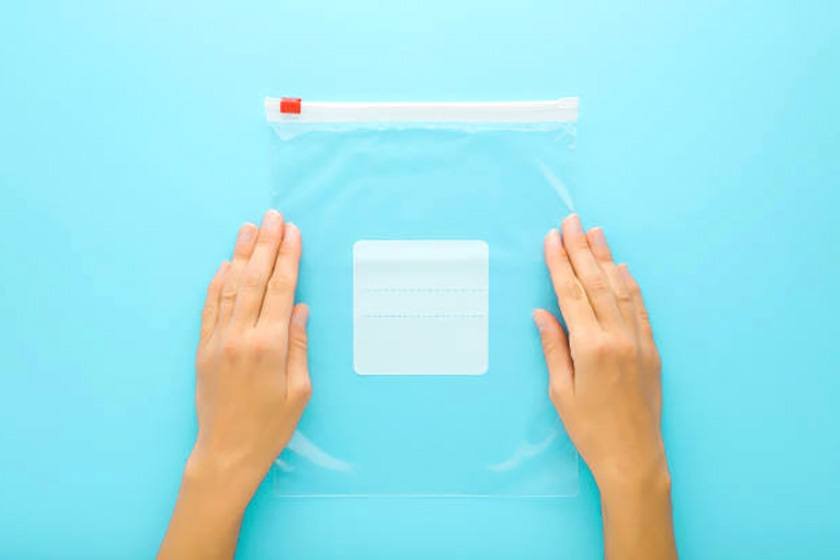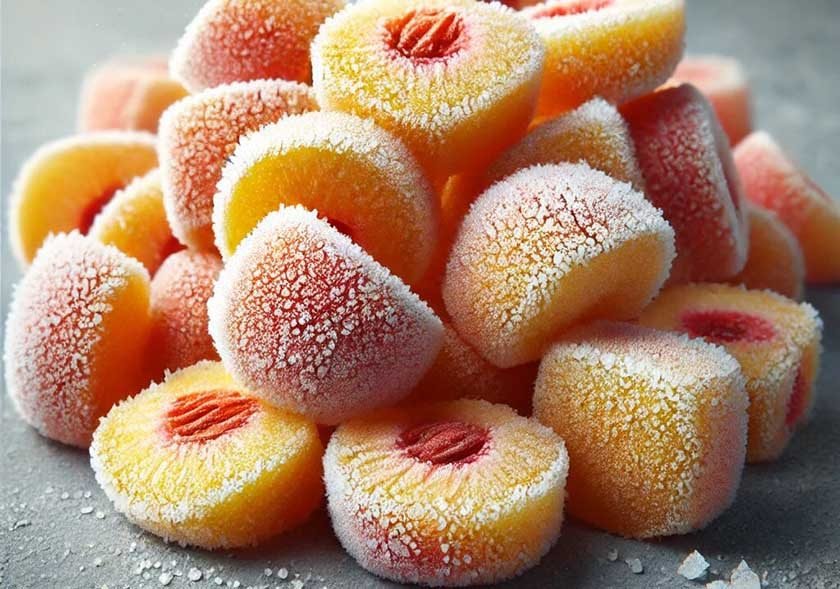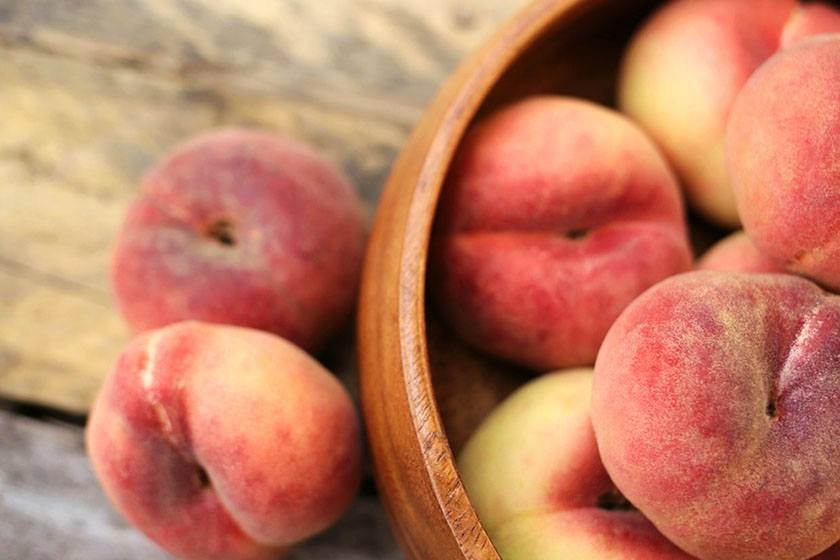Freezing peaches is an effective method for preserving their sweet and juicy flavor long after the summer season has concluded.
Whether you’re looking for the best way to freeze peaches after a bountiful harvest or simply want to stock up on this delicious fruit, following proper freezing techniques can greatly enhance the preservation process.
This guide will explore the best way to freeze peaches by discussing the most suitable types of peaches, essential tools required, various freezing techniques, and tips for proper storage and defrosting methods.
Furthermore, it will highlight delightful ways to incorporate frozen peaches into recipes, allowing individuals to enjoy the essence of summer throughout the entire year.
Why Freeze Peaches?
Freezing peaches is a crucial method for preserving the optimal ripeness and natural sweetness of this seasonal fruit, enabling enjoyment of its delightful flavor and nutritional benefits well beyond the harvest period.
This process effectively retains the fruit’s vibrant color and aroma while minimizing quality degradation, making frozen peaches a versatile ingredient for numerous culinary applications.
By employing effective peach freezing techniques, one can maintain their texture, flavor, and nutritional value, ensuring that they remain a delicious and healthful option for s smoothies, desserts, and various other dishes.
What Are The Best Peaches To Freeze?
When selecting peaches for freezing, it is essential to choose ripe specimens that are at their peak flavor and sweetness to ensure optimal results in preservation efforts. Different peach varieties can significantly influence the flavor profile and texture of the frozen product – therefore, understanding which types withstand freezing best is crucial. It is advisable to consider organic peaches or those sourced from local farms for superior quality and taste.
Freestone peaches are an excellent option for freezing, as they separate easily from the pit, facilitating preparation. Clingstone peaches, known for their intense sweetness, are also a commendable choice, particularly for desserts or smoothies.
To determine if the peaches are ripe, one should gently squeeze them – they should yield slightly without being mushy. A vibrant golden hue and a fragrant aroma are additional indicators of peak ripeness, which can significantly enhance the culinary experience, especially when considering the best way to freeze peaches for long-term storage.
What Are The Tools Needed For Freezing Peaches?
 To effectively freeze peaches while preserving their flavor and texture, it is essential to utilize several key tools that facilitate the freezing process and ensure proper storage. Important items include:
To effectively freeze peaches while preserving their flavor and texture, it is essential to utilize several key tools that facilitate the freezing process and ensure proper storage. Important items include:
- paring knife for precise slicing;
- cutting board for preparation;
- freezer bags or sturdy storage containers for optimal long-term preservation.
Furthermore, a large pot for blanching the peaches and an ice water bath to halt the cooking process are critical, as they minimize enzyme activity, thereby maintaining the fruit’s quality during freezing.
Paring Knife
A paring knife is an essential tool for the preparation of peaches, facilitating precise peeling and slicing of fresh fruit prior to freezing. This method ensures that the peaches are cut into manageable pieces, optimizing their suitability for freezing and subsequent use.
Employing a paring knife not only simplifies the peeling process but also helps maintain the integrity of the fruit, which is essential for preserving texture and flavor. When cutting peaches, it is advisable to slice along the natural grooves of the fruit, gently separating the flesh from the pit. This technique aids in preserving the fruit’s shape and minimizes bruising.
Freezing the sliced pieces on a baking sheet before transferring them to airtight bags prevents clumping, allowing for easy access to individual slices at a later time. Consequently, even after thawing, the peaches will retain a pleasing firmness and fresh taste, making them ideal for smoothies, desserts, or as a convenient snack.
Cutting Board
A robust cutting board is essential for ensuring food safety and efficiency during the preparation of peaches for freezing, as it provides a clean surface for slicing and minimizes the risk of cross-contamination.
Utilizing the appropriate type of cutting board can significantly enhance the hygiene of the preparation process. For handling fruits such as peaches, a non-porous cutting board made from materials like plastic or bamboo is often recommended, as these surfaces are easier to sanitize. In contrast, while wooden boards may be visually appealing, they can harbor bacteria if not properly maintained.
Ensuring that the cutting board is both clean and suitable for the task at hand is crucial for safe food preparation, just like knowing the best way to freeze peaches, allowing individuals to enjoy the process while safeguarding their health.
Large Pot
A large pot is essential for blanching peaches, a critical step in freezing techniques that effectively halts enzyme activity, thereby preserving the fruit’s flavor and texture.
This method not only improves the preservation process but also facilitates easier peeling of the peaches, ensuring that the final product meets the highest quality standards.
By immersing the peaches in boiling water for a brief duration, the heat penetrates the skin, causing it to loosen from the fruit. The use of a large pot is imperative, as it allows for the accommodation of a substantial number of peaches simultaneously, ensuring they are evenly blanched.
This efficiency not only conserves time but also maximizes flavor retention, making the frozen peaches a valuable addition to recipes throughout the year.
Large Bowl
A large bowl is essential for accommodating blanched peaches and facilitating the easy mixing of flavor-enhancing ingredients, such as lemon juice or sugar syrup, prior to freezing.
This bowl not only provides sufficient space for thorough mixing but also ensures that each peach is evenly coated with the selected mixture, which can significantly enhance the fruit’s flavor once frozen. By supporting the freezing process, the bowl helps preserve the integrity of the peaches’ texture, preventing them from becoming mushy.
Moreover, utilizing a bowl crafted from materials that effectively conduct temperature can promote uniform cooling of the peaches, thereby ensuring optimal flavor retention when they are ultimately thawed for use in pies, smoothies, or other culinary applications.
Ice Water Bath
An ice water bath is an essential component of the freezing process, as it immediately halts the cooking of blanched peaches and ensures that the fruit retains its vibrant color and firm texture.
This technique not only helps the peaches maintain their appealing appearance but also plays a critical role in food safety. By rapidly cooling the fruit, the ice water bath inhibits the growth of harmful bacteria that could proliferate if the fruit is allowed to cool slowly at room temperature. As a result, this practice extends the shelf life of peaches, enabling them to be enjoyed well beyond the harvest season.
When properly preserved, these fruits can be incorporated into a variety of recipes, providing a taste of summer even in the colder months.
Freezer Bags or Containers
 Freezer bags or sturdy containers are essential for the proper storage of peaches, as they provide protection against freezer burn and facilitate long-term storage without compromising quality.
Freezer bags or sturdy containers are essential for the proper storage of peaches, as they provide protection against freezer burn and facilitate long-term storage without compromising quality.
When selecting the appropriate type of freezer bags or containers, it is important to consider factors such as thickness, size, and sealing capabilities. A thicker, heavy-duty bag offers the best way to freeze peaches by providing better protection against potential tears and punctures, while a container equipped to minimize air exposure is critical for maintaining the quality of the fruit.
For optimal preservation, it is advisable to wash and dry the peaches thoroughly prior to packing. Utilizing a vacuum sealer, if available, can significantly enhance the sealing process by removing air pockets. Should a vacuum sealer not be an option, ensuring that the bags are adequately squeezed before sealing can also contribute substantially to preventing freezer burn.
What are the Best Way to Freeze Peaches?
Freezing peaches can be accomplished through several effective methods, each aimed at enhancing flavor retention and preserving the fruit’s texture. Whether one chooses the blanching method, sugar pack method, or dry pack method, selecting the appropriate approach will ensure that the frozen peaches maintain their quality and nutritional value for months.
Understanding the proper techniques for freezing peaches allows individuals to enjoy this summer fruit throughout the colder months.
Blanching Method
The blanching method entails briefly boiling peaches before immersing them in ice water, a technique that effectively halts enzyme activity and enhances flavor retention. This process not only preserves the fruit’s vibrant color but also aids in maintaining its natural texture.
By immersing peaches in boiling water for approximately 30 to 60 seconds and subsequently transferring them to an ice bath, one creates a barrier against bacteria and spoilage. This is particularly advantageous for individuals intending to store peaches for an extended period, as it helps lock in essential vitamins and nutrients.
When employing this method, it is essential to monitor the timing closely, as over-blanching can result in a mushy consistency. Additionally, ensuring that the ice bath is adequately chilled will maximize the effectiveness of this preservation technique.
Sugar Pack Method
The sugar pack method involves the application of sugar over sliced peaches to enhance their inherent sweetness, thereby aiding in the preservation of their flavor and texture during the freezing process.
The best way to freeze peaches starts with selecting ripe peaches, as their natural sugars are at their peak. Once sliced, they are generously coated with sugar and gently mixed to ensure an even distribution. This process enables the sugar to extract juice from the peaches, resulting in a syrupy mixture that saturates the fruit.
The resulting blend not only intensifies the sweetness but also creates a protective barrier, minimizing the risk of freezer burn and maintaining the fruit’s original taste and consistency.
When the time comes to savor these peaches once more, they retain a remarkably fresh taste, akin to that of freshly harvested fruit.
Dry Pack Method
The dry pack method involves placing sliced peaches in freezer bags without the addition of sugar or liquid, presenting a straightforward option for preserving peaches.
This technique allows for an unaltered flavor profile, highlighting the fruit’s natural sweetness upon thawing. To achieve optimal results, it is essential to select ripe yet firm peaches, as overripe fruit may become mushy during freezing.
When employing this method, it is advisable to remove as much air as possible from the bags before sealing to minimize freezer burn, which can adversely affect quality.
Labeling each bag with the date of freezing is beneficial for tracking freshness, ensuring that the delightful flavors of summer are maintained at their peak for future enjoyment.
How To Store Frozen Peaches?
Proper storage of frozen peaches is essential to prevent quality deterioration and to preserve their optimal taste and texture. To achieve this, it is important to maintain a freezer temperature consistently set at 0°F (-18°C) and to package the peaches securely in freezer bags or airtight containers to minimize exposure to air.
Labeling the packages with the date of freezing is advisable for tracking freshness, as peaches can lose flavor over time, even when preserved in a frozen state. It is recommended to remove as much air as possible from the packaging to mitigate the risk of freezer burn, which can adversely affect both the texture and taste of the fruit.
For optimal results, consider utilizing vacuum-sealed bags, as they offer superior protection. Additionally, it is prudent to avoid storing peaches near foods with strong odors, as peaches can easily absorb these flavors, which may compromise their inherent sweetness.
By adhering to these best practices, one can ensure that peaches remain a delightful treat whenever they are enjoyed, making it the best way to freeze peaches for future use.
How To Defrost Frozen Peaches?
Thawing peaches correctly is crucial for maintaining their texture and flavor profile, thereby ensuring their suitability for various culinary applications. The most effective thawing methods involve placing the peaches in the refrigerator overnight or utilizing a microwave for expedited defrosting.
Each method presents distinct advantages that impact the overall quality of the fruit. Slow thawing in the refrigerator helps preserve a firmer texture, while microwaving may result in a softer fruit, potentially altering its original bite. Another widely-used technique involves submerging sealed peaches in cold water for approximately one hour, which strikes a balance between speed and texture retention.
When incorporating thawed peaches into recipes, one might consider the following options:
- Adding them to smoothies for a creamy base;
- Folding them into baked goods to enhance moisture and sweetness;
- Using them as a topping for yogurt and oatmeal.
By experimenting with these methods, one can ensure that the natural qualities of peaches are highlighted effectively.
What Are The Uses Of Frozen Peaches?
 Frozen peaches are exceptionally versatile and can be utilized in a diverse array of culinary applications, ranging from peach smoothies to desserts such as peach cobbler and fruit salads.
Frozen peaches are exceptionally versatile and can be utilized in a diverse array of culinary applications, ranging from peach smoothies to desserts such as peach cobbler and fruit salads.
Their inherent sweetness and vibrant flavor render them an excellent ingredient for enhancing the overall taste of various dishes.
Smoothies
Peach smoothies made with frozen peaches represent a nutritious and enjoyable snack option, delivering a refreshing flavor profile ideal for warm days or post-workout recovery.
These smoothies not only offer a delightful burst of fruity sweetness, but the incorporation of frozen peaches also provides a creamy texture without the necessity for additional dairy. The use of frozen fruit preserves its nutritional value, allowing the retention of essential vitamins A and C, which are advantageous for skin health and immune system enhancement.
To prepare this delightful treat, the following ingredients are required:
- One cup of frozen peaches;
- Half a banana for added creaminess;
- One cup of almond milk;
- One tablespoon of honey or maple syrup for sweetness.
Blend all these ingredients until smooth to create a refreshing beverage that keeps you energized and satisfied throughout the day, which is also the best way to freeze peaches for later use in smoothies. This smoothie not only pleases the palate but also nourishes the body with its rich combination of flavors and essential nutrients.
Baked Goods
Incorporating frozen peaches into baked goods, such as peach cobbler or muffins, not only introduces natural sweetness but also enhances the overall flavor and texture of the desserts.
When utilizing these frozen fruits, bakers can ensure that their creations are imbued with a rich peach flavor while maintaining a tender crumb. As the peaches thaw and release their juices during the baking process, they create a moist environment that complements both fruity and spiced flavors exceptionally well.
Along with cobblers and muffins, one might consider adding frozen peaches to pancakes or cakes, which can yield delightful results. These peaches blend harmoniously with cream cheese frosting and can significantly elevate the quality of airy scones.
The versatility of frozen peaches guarantees that each bite captures the essence of summer, rendering these desserts truly unforgettable.
Fruit Salads
Frozen peaches can significantly enhance fruit salads by providing a burst of flavor and a pleasing texture that complements the other seasonal fruits in the dish.
Incorporating these delightful fruits can transform an ordinary salad into an impressive centerpiece. To elevate the dish further, blending frozen peaches with fresh berries, such as strawberries or blueberries, offers a vibrant color contrast and a harmonious balance of sweet and tart flavors. Adding a hint of mint contributes a refreshing note, while a drizzle of honey or lime juice can brighten the overall taste profile.
For presentation, it is advisable to arrange the salad in a clear bowl to highlight the brilliant hues, and garnishing with a sprig of mint can add a touch of elegance.
Jam or Preserves
Utilizing frozen peaches for the preparation of peach jam or preserves is an excellent method for encapsulating the fruit’s flavor and enjoyment in a jar, thereby extending its utility beyond the seasonal availability.
These frozen peaches retain their vibrant taste and nutritional benefits, ensuring that each serving is infused with the sweet, juicy essence of summer. Additionally, they streamline the preparation process, making the best way to freeze peaches hassle-free, so you can enjoy them year-round without the inconvenience of peeling and slicing fresh fruit.
The straightforward transformation of these frozen peaches into a delightful spread fosters creativity in the kitchen, enabling anyone to easily create a batch that is ideal for breakfast or as a topping for desserts.
What Are The Tips For Freezing Peaches?
To achieve optimal results when freezing peaches, it is essential to adhere to key freezing practices that enhance preservation and maintain flavor integrity. These practices include selecting high-quality, ripe peaches and employing effective freezing techniques such as blanching and proper packaging.
Selecting peaches that are slightly soft to the touch and fully colored will maximize sweetness and flavor. It is also critical to wash the fruit thoroughly to eliminate any pesticides and dirt.
Blanching, which involves a brief immersion in boiling water followed by immediate cooling in ice water, effectively preserves color and texture by halting enzymatic reactions.
After blanching, proper draining and cooling are crucial before packaging. Utilizing airtight containers or freezer bags is necessary to minimize air exposure, which can lead to freezer burn and a degradation in quality.
Additionally, maintaining a record of freezing dates is advisable to ensure the peaches are utilized at their peak flavor, as quality may diminish over time. Explore our FAQ section below for more support.

